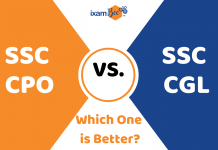One of the two subjects in the bank exams is the Finance & Management Section. This section assesses the candidate’s knowledge of finance and management. As a result, it’s a little more difficult for candidates who don’t come from a finance or management background. On the plus side, the topics covered in the syllabus do not delve too deeply into the subject. However, in order to do well in this subject, you must have thorough coverage of all topics at the foundational level. In this article, we are covering one such topic viz., Management and Organizational Behavior. This topic is of vital importance in the government bank exams. Let’s get started:
Definition of management
- Management, according to Mary Parker, is “the art of getting things done through others.”
- Management, according to Ivancerich, Donnelly, and Gibson, is “the process undertaken by one or more persons to coordinate the activities of other persons in order to achieve results not attainable by any single person acting alone.”
- In the definition of management, John A. Pearce and Richard B. Robinson covered a wide range of resources. “Management is the process of optimizing human, material, and financial contribution for the achievement of organizational goals,” they explain.
- Administering and organizing processes and affairs of the organization so as to achieve the objectives of the organization.
Functions of management
Management, as previously stated, is the process of organizing, staffing, directing, and controlling the efforts of organization members in utilizing all resources to achieve the organization’s goals, objectives, and mission. Management is a method for carrying out activities in a systematic manner.
- Planning
- Organizing
- Staffing
- Directing
- Controlling
Planning: The activities involved in deciding how to achieve organizational goals are referred to as planning. It entails deciding ahead of time what to do when to do it, how to do it, and who will do it in order to meet these goals. To achieve goals, both long- and short-term plans are required.
Organizing: The act of organizing entails grouping jobs into a framework for coordination and direction. An organization chart can be used to depict formal organizations. Product, function, geography, customer, and project are all used to structure organizations. Complex environments, markets, and technology have all contributed to the matrix structure.
Staffing: Planning, organizing, directing, and controlling the procurement, development, compensation, integration, and maintenance of people in order to contribute to individual, organizational, and social goals is referred to as staffing.
Job analysis, human resources planning, recruitment, selection, induction, placement, training, execution development, wage and salary administration, leadership, teamwork, motivation, grievance procedure, disciplinary procedure, and so on are all required in this process.
Directing: At any level of management, one of the most important functions is to direct people by motivating, commanding, leading, and activating them. Employees can be directed to cooperate willingly and effectively in order to achieve organizational goals.
Through and command, it is possible to tap into people’s full potential. As a result, the direction is a crucial managerial function in ensuring employee participation.
Controlling: The performance of the various activities must be verified after they have been planned, organized, staffed, and directed in order to determine whether they are being carried out in accordance with the plans and objectives. Controlling also entails checking, verifying, and comparing actual performance to plans, as well as identifying and correcting deviations, if any exist. As a result of control, actions and operations are adjusted to predetermined plans and standards.
The goal of control is to ensure that an organization runs smoothly by focusing on all of its resources, including people, materials, finances, and machines.
Management levels
- Management at the Top levels:- Top level management refers to the company’s senior executives, such as the Managing Director or President, Vice Presidents, General Managers, Chief Executive Officers, and so on. The company’s top management, particularly the managing director or president, is responsible for the company’s overall management and performance. The company’s top management sets the company’s goals, policies, and corporate strategies.
- Managers at the middle level: – Managers at the middle level are in charge of coordinating the activities of various departments. Managers of various departments, such as marketing, finance, human resources, and research and development, are examples of middle managers. These managers are in charge of their departments’ success or failure. Middle-level managers base their departments’ objectives, goals, and strategies on those of the organization.
- Managers at a lower level: – Lower-level managers are in charge of the work of the operating staff they supervise. Lower-level managers are also known as first-line, junior, or first-line managers. They are in charge of directing, leading, motivating, and coordinating the activities of the operating personnel. These managers are primarily in charge of supervising how the operators carry out their duties. As a result, lower-level managers are referred to as ‘Supervisors.’
Principles of management
In addition, Fayol outlined fourteen management principles. They are as follows:
- Division of labor: The more specialists there are, the more efficiently they can complete their tasks. The modern assembly line epitomizes this principle.
- Authority: Managers must have authority in order to get things done. Managers will not always compel obedience unless they have personal authority (such as relevant expertise) in addition to their formal authority.
- Discipline: Members of an organization must adhere to the organization’s rules and agreements. Discipline, according to Fayol, is the result of good leadership at all levels of the organization, as well as fair agreements.
- Unity of command: Only one person can give instructions to each employee. Fayol refuted the notion that if an employee reported to multiple managers, there would be inconsistencies in instructions and confusion over authority.
- Unity of Direction: Within the organization, operations with the same goal should be directed by a single manager using a single plan.
- Individual interests should be subordinated to the common good: In any endeavor, employees’ interests should not take precedence over the organization’s. In its entirety.
- Remuneration: Both employees and employers should be compensated fairly for their efforts.
- Centralization: The process of reducing the role of subordinates in decision-making, while decentralization is the process of increasing their roles.
- The hierarchy: Today, the lines of authority in an organization are frequently represented by the neat boxes and lines of the organization chart, which runs in order of rank from the top management to the lowest level of the company.
- Order: Materials and people must be in the correct location at the correct time. People, in particular, should be in jobs or positions that are a good fit for them.
- Equity: Managers should treat their subordinates with respect and fairness.
- Staff stability: A high employee turnover rate jeopardizes an organization’s ability to function efficiently.
- Initiative: Subordinates should be given the freedom to conceive and carry out their plans, even though some mistakes may result.
- Esprit de corps: Promoting team spirit will give the organization a sense of unity
Introduction to organizational behavior
Organizational behavior is a field of study that looks into the effects of individuals, groups, and structure on behavior within organizations to apply what they learn to improve the effectiveness of the organization. Behavior is generally predictable, and studying it in depth allows you to make reasonably accurate predictions.
Looking at relationships, attempting to attribute causes and effects, and drawing conclusions based on scientific evidence are all part of systematic research.
Disciplines contributing to organizational behavior
- Psychology
- Perception
- Motivation
- Emotions
- Personality
- Training
- Leadership effectiveness
- Job satisfaction
- Individual decision making
- Performance appraisal
- Attitude measurement
- Employee selection
- Work design
- Work stress
Organizations have been gearing themselves in recent years to meet the growing demands from their stakeholders in terms of responsiveness, flexibility, agility, and adaptability, among other things. They follow organic structures in this process, which are more agile, flexible, and adaptable to changing circumstances. Virtual organizations, cellular organizations, team structures, boundary-less organizations, and inverted pyramid organizations are all examples of inverted pyramid organizations.
ixamBee creates enhanced learning for preparation of competitive exams. ixamBee aims to provide the best online learning experience for the preparation of competitive exams for government jobs.
Also read:
RBI Grade B Phase 2 DEPR Exam Analysis: March 31, 2021
RBI’s Monetary Policy: February 2021
RBI: Financial Stability Report 2021
RBI Grade B 2021: How to Approach ESI Descriptive Paper?
Get Free Online Test Series, GK updates in form of Beepedia, as well as latest updates for Bank PO, Bank Clerk, SSC, RBI, NABARD, and Other Government Jobs.













